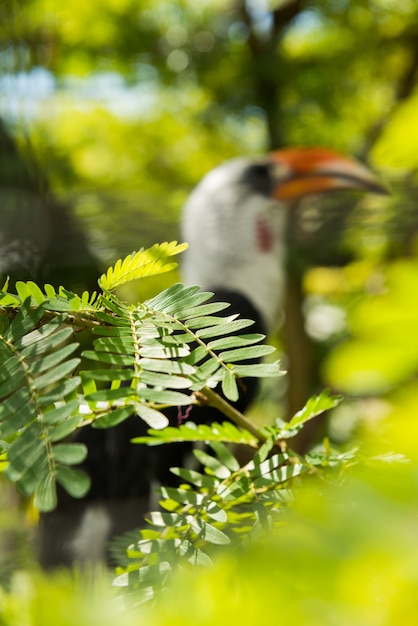Exploring Fascinating Facts about Tropical Rainforests

Tropical rainforests are home to more than half of the world’s plant and animal species.
The Amazon rainforest, located in South America, is the largest tropical rainforest in the world.
Rainforests contribute to the production of over 20% of the world’s oxygen.
Some of the rarest and most unique plant and animal species can only be found in tropical rainforests.
The temperature in tropical rainforests remains relatively constant throughout the year, usually between 70°F and 85°F.
The canopy of a tropical rainforest acts as a natural umbrella, protecting the forest floor from heavy rainfall.
More than 2,000 different species of butterflies can be found in tropical rainforests.
The world’s largest flower, the Rafflesia, can only be found in the rainforests of Southeast Asia.
Tropical rainforests are an important source of medicinal plants, with 25% of modern medical drugs derived from rainforest plants.
The sound of a tropical rainforest is so loud that it can be heard up to two miles away.
Rainforests help regulate the Earth’s climate by absorbing carbon dioxide and releasing oxygen through photosynthesis.
The tallest trees in the world, like the redwood and eucalyptus, can also be found in tropical rainforests.
Tropical rainforests are also known as the lungs of the Earth due to their significant role in producing oxygen.
Rainforests are extremely biodiverse, with up to 300 different species of tree in just one square kilometer.
Exploring Fascinating Facts about Tropical Rainforests part 2
The famous chocolate we love comes from the cacao tree, which grows in tropical rainforests.
Many indigenous tribes have lived in tropical rainforests for centuries, having developed unique ways of surviving and thriving in the dense environment.
Tropical rainforests are home to several poisonous plants and animals, making it a challenging environment for humans to navigate.
The majority of the fruits we consume, such as bananas, pineapples, and mangoes, come from tropical rainforests.
The soil in tropical rainforests is often poor in nutrients, which is why vegetation grows quickly and efficiently to absorb available resources.
Rainforests are threatened by deforestation, with an estimated 80,000 acres of rainforest disappearing each day.
The Amazon rainforest alone is estimated to be home to around 400 billion individual trees.
The world’s largest river by volume, the Amazon River, flows through the Amazon rainforest.
Rainforests are considered one of the oldest ecosystems on Earth, with some areas dating back to over 100 million years.
The blue morpho butterfly, found in tropical rainforests, has wings that appear iridescent blue due to microscopic scales.
Some orchids found in tropical rainforests have developed a symbiotic relationship with specific insect species, relying on them for pollination.
The diverse range of sounds in a tropical rainforest, including bird songs, monkey calls, and insect noises, create a unique and vibrant ecosystem.
Many of the world’s most colorful and unique bird species, such as toucans and macaws, call tropical rainforests their home.
The maleo bird, found in the rainforests of Indonesia, has a unique nesting behavior. It buries its eggs in volcanic sand and relies on the heat generated by volcanic activity for incubation.
Rainforests are known for their dense foliage, with some areas receiving up to 400 inches of rainfall per year.
The endangered red-shanked douc, a primate species with vibrant coat colors, can only be found in tropical rainforests in Southeast Asia.
Rainforests have a complex layering system, with different plants occupying various levels, such as the forest floor, understory, canopy, and emergent layer.
Some tree species in tropical rainforests have adapted to grow roots from their branches, allowing them to anchor themselves to other trees and access more sunlight.
Tropical rainforests are often referred to as the world’s pharmacy due to the potential medicinal value of their plants.
The poison dart frog, found in rainforests of Central and South America, has brightly colored skin to warn predators of its toxicity.
Rainforests are constantly evolving and changing due to natural events like landslides and tree falls.
The durian fruit, infamous for its strong odor, is native to tropical rainforests in Southeast Asia.
The aerial roots of the banyan tree, found in rainforests of India and Southeast Asia, can grow into new trunks, creating a seemingly endless forest.
The Victoria Amazonica, a water lily species found in Amazon rainforests, can grow leaves up to 10 feet in diameter.
Certain rainforest plants have developed unusual adaptations, such as carnivorous pitcher plants that trap insects and other small prey.
Some species of bamboo found in tropical rainforests can grow up to three feet in a single day.
Rainforests have complex food webs, with each species playing a crucial role in maintaining the delicate balance of the ecosystem.
Tropical rainforests are also home to a variety of primates, including gorillas, orangutans, and spider monkeys.
The Kakapo, a flightless parrot found in rainforests of New Zealand, is the heaviest parrot species in the world.
The Marbled Cat, a small wild cat species, is rarely seen in the wild and primarily inhabits tropical rainforests.
Rainforests provide numerous ecosystem services, such as water filtration, climate regulation, and soil protection, which are essential for supporting life on Earth.

